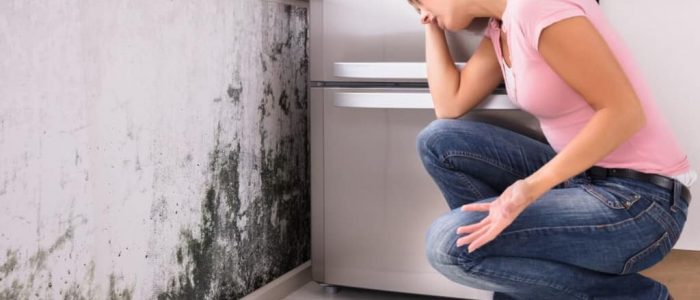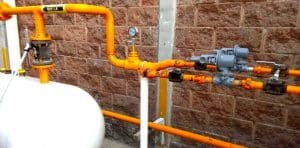Have you detected high humidity in your house? It is high and you want to solve it? What causes humidity levels to rise in a home? How to prevent dampness from reappearing in your home after a while?
Higher than normal humidity decreases its energy efficiency. It makes the air inside your home warmer and your air conditioner will have to work to cool it down. Now, humidity can be very tricky. If you are experiencing condensation on aluminum windows, dampness on the façade of the community or a certain room in your house has a specific place that is humid, it is probably dealing with a leak.
Those are hard to find because the water can hang from the joists and pipes and run very far from the true source of the leak. But if it is an entire room that is affected, or even just an entire wall, it is most likely a moisture problem. In the event of leaks, it is probably best to have a professional handle the repair. But you can reduce the humidity on your own. This article will teach you how to lower the humidity in your home.
How to eliminate humidity indoors
It's obvious: When moisture enters your home, it causes humidity levels to rise.
Therefore, the first step is to make sure that you take all possible measures to prevent moisture from entering your home.
1. Prevention steps at home
If you have a crawl space with dirt terrain, cover it with a polyethylene floor covering. Make sure you have dry soil and that there is no standing water in the area. Use fans, if necessary, to help dry the area.
Make sure your dryer duct vents directly to the outside. If you don't, you actually find yourself in a dangerous situation that can cause a fire and also lead to high humidity.
2. Put exhaust fans in the house
Kitchen and bathroom fans are there for a reason: to help let out unpleasant odors and excess moisture.
Did you know that if humidity is left in a room for 24 to 48 hours, humidity levels above 55% can cause mold and bacteria to grow? That's just another reason to keep it under control.
Turn on your exhaust fans every time you have to cook or take a shower to prevent excess moisture from building up.
3. Use a dehumidifier
If your indoor humidity levels like to be around 65% or higher, then it's time to buy a dehumidifier. A portable one will do the job, but you can buy a whole house dehumidifier if you have the budget.
4. Grow plants that absorb moisture
Some plants, like Boston ferns, remove moisture from the air. Not only are you reducing humidity levels and energy consumption, but you are also helping the environment by removing more carbon dioxide and also adding more oxygen.
5. Don't boil water on especially humid days
Some of that boiled water turns into steam, which is then absorbed into the rest of the air in your home. If there is a lot of humidity outside, some of it will enter your home no matter how much you do to avoid it. Don't increase their humidity levels further by boiling water!
Reducing humidity is probably one of the lesser known energy efficiency tips. But your energy bills, your health, will thank you.
6. Dry your clothes
One task that comes across as a surprising source of moisture within homes is doing laundry. This is due to the moisture exposed to the house when wet clothes are hung indoors. This can be made even worse by poor ventilation inside certain rooms. To prevent your damp clothes from increasing humidity levels, you can use a tumble dryer or simply hang wet clothes outside to prevent moisture exposure from affecting your home.
7. Clean the air conditioning filters
Air conditioning is a great tool to prevent or reduce humidity, as to give you a cool home, it will draw in the air from outside and filter the humidity. This is a natural dehumidification method, but it is only as effective as air conditioning filters. Over time, the filters become clogged and impede air flow, allowing for moisture. Giving them a cleaning will help reduce the amount of humidity in your home. Ventilated ovens also have a similar effect, so be sure to clean them as well.
8. Take colder and shorter showers
While long, hot showers are as much a part of a person's routine as brushing teeth, these showers expose homes to moisture and heat. It is understandable that extensive cleaning contributes to the humidity in our home, but it can decrease simply by taking colder or shorter showers. Efficient appliances like low-flow shower heads can also be used to minimize the amount of humidity inside a home by reducing the amount of moisture that homes are exposed to.
9. Replace your carpet
Although often overlooked, rugs do more in homes than most people realize. In addition to cushioning surfaces and adding visual appeal, rugs also have the ability to retain moisture. Because of this, they may be quietly contributing to the humidity in your home. In case you've tried other methods to dehumidify your home and they haven't worked, you may want to consider replacing the carpet.
Benefits of lower humidity in the home
Most people think that reducing the humidity in the house is only beneficial when it comes to temperature, but that is not the case. The nature of moisture allows a number of organisms and processes to occur that affect those within space in various ways. As a result, taking steps to reduce the amount of humidity in your home will pay off in more ways than one.
Better smell
There are times when your home requires aeration to remove odors, but sometimes, even after a complete attempt to lessen those odors, they somehow remain. Moisture may be causing this, as it actually causes smelly mold and mildew to grow. To reverse this, you will probably have to do two things. The first is to confirm whether or not there is a source for the odor and remedy it. That means locating and removing any sources of mold that may be growing. From there, you'll want to start dehumidifying to remove moisture from the room, which will help restore the standard scent of the space.
Decrease in allergies
Moisture in homes allows allergy triggers like dust mites and mold to flourish as moisture can build up. As a result, those who live in these spaces are subject to sneezing, wheezing, and nasal congestion. Not only can this lead to miserable living conditions, it can also be particularly harmful to children, as it can contribute to the development of childhood asthma. Dehumidifying the area helps it dry out and prevents allergy triggers from getting in the way of everyday life. Sometimes residential areas are subject to particularly wet seasons, allowing triggers to multiply. Make sure to dehumidify if your area experienced such a stretch.
Home health
In addition to affecting those inside the houses, humidity can also have an effect on various structural components of the house. Just below the surface, excess moisture from moisture can gradually rot into the wood inside homes, causing deterioration of both flooring and furniture. Moisture can damage drywall and exacerbate cracks, allowing mold and drafts to enter your home and require you to make costly repairs over time. The benefit of diligently dehumidifying your home is that it not only prevents damage, but also helps eliminate the growth of hazards that can be hard to reach and go unnoticed.
Now that you know how to lower the humidity in your home, are you looking for a company specialized in the diagnosis and treatment of humidity? Acuasec helps you diagnose and treat damp easily and quickly!


